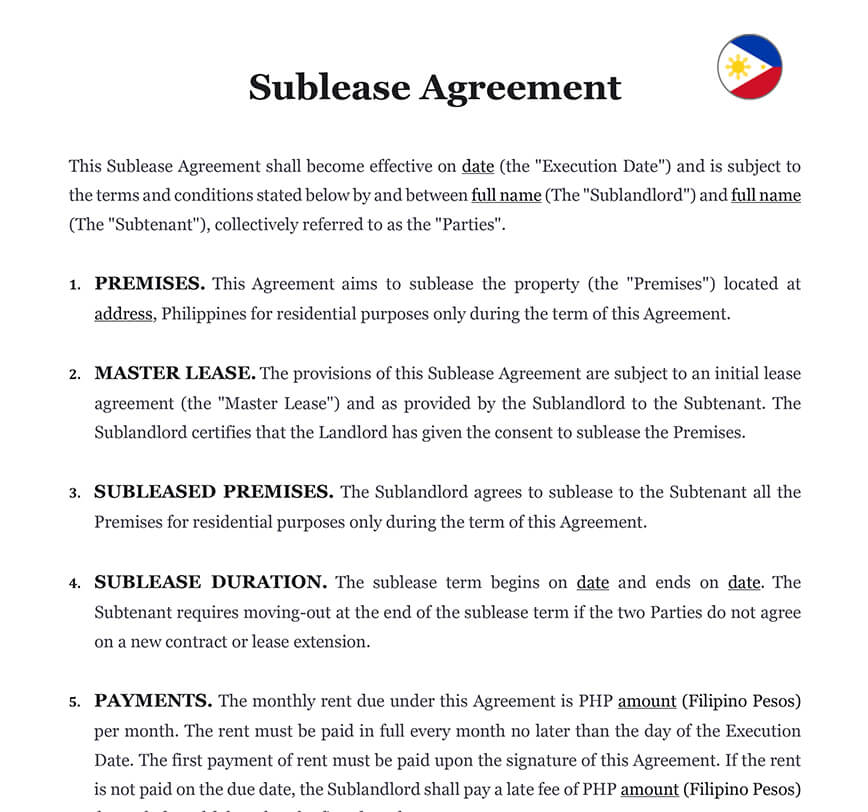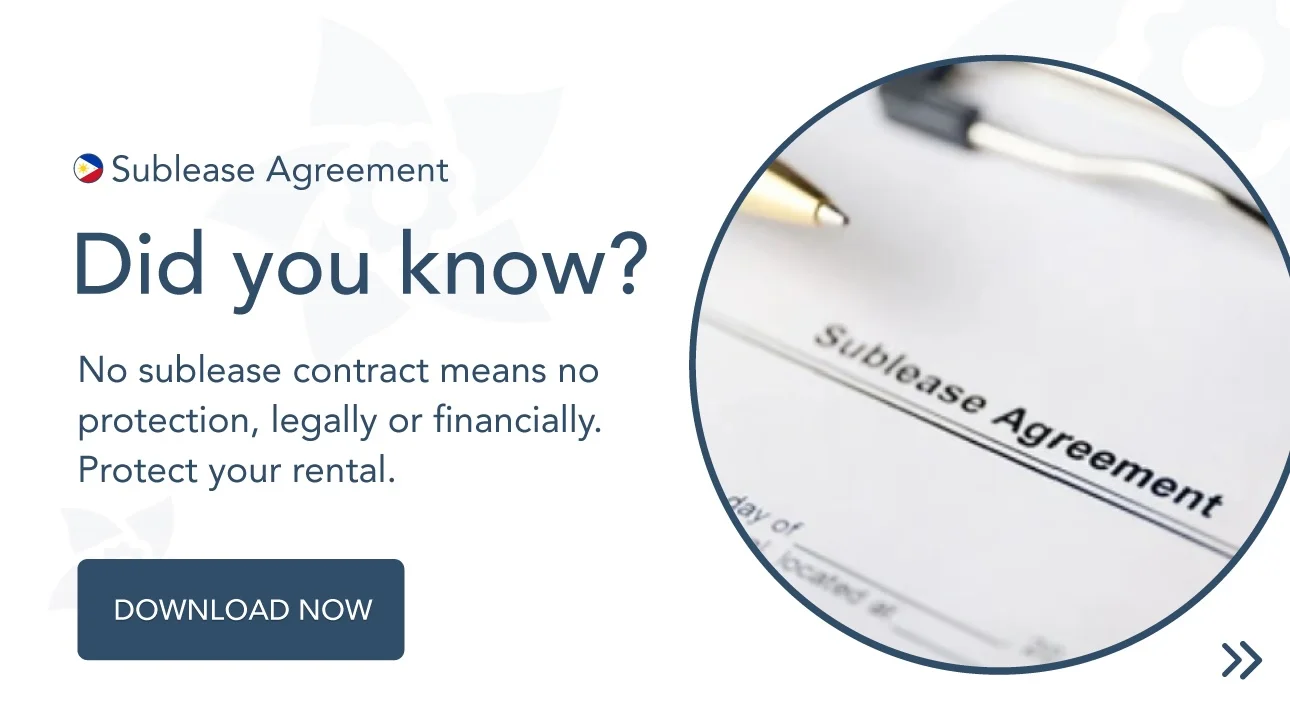Ready to use legal template
Drafted by experienced lawyers
Compliant with Filipino law
Ready to use legal template
Drafted by lawyers
Compliant with Filipino law
Home › Rent your property › Sublease agreement
Learn more about Sublease Agreement in Philippines
A Sublease Agreement is a legal document that allows a renter to sublease a place that they already occupy. The original tenant and the new renter often sign the Sublease Agreement. You must protect your property before subletting it and make the new renter accountable for any damages. The Sublease Agreement generally follows the terms and conditions of the original Lease Agreement between the Landlord and the Tenant, with the exception that the Landlord is not involved in the process. Before a tenant begins the subletting process, make sure he received a written Consent to Sublease Letter from the Landlord.
Table of contents
What is a Sublease Agreement?
A sublet is a lease of an estate by the lessee to a third party that conveys all or part of the estate for a shorter duration than the lessee originally held. A sublet is a separate agreement between the lessee and the sublessee. In this new arrangement, the original lessee becomes a sublessor. The owner of the property and the sublessee have no contractual privity under the sublet. The original lessee is still obligated to satisfy the lease terms. The landlord may restrict a tenant from subleasing the estate.
What are the different types of sublets?
There are several sorts of subleases, including sublets. Leases are not the same as sublease agreements since they transfer legal and financial duty to another party. The following are the distinctions between a sublease and a lease, as well as a sublease and a sublet:
1. Sublease vs Lease
Leases are a sort of rental Leasing Agreement that is entered into between a landlord and a tenant. They can be for either residential or commercial use. A sublet, on the other hand, happens between a tenant and a third-party individual who will pay rent and reside in the property for the balance of the original rental arrangement.
2. Sublease vs Sublet
Sublets, sometimes known as relets, allow new renters to take over a lease straight from the property owner or management. Tenancy difficulties are handled by the landlord in the case of a sublet. When establishing a contract for a sublease, use a sublet agreement.
A sublease occurs when the incoming renter deals with the tenant directly. The tenant serves as the property manager under a sublease. When establishing a contract, include a Sublease Agreement to legally handle this arrangement.
What is Included in a Sublease Agreement?
A Sublease Agreement must be highly precise and all-inclusive of the expectations of the original tenant and the landlord of the property in order to be effective. Ensuring that all of the information a subletter will want is contained in the Sublease Agreement can help avoid future legal disputes, since the Sublease Agreement is used to establish what legal actions original tenants, landlords, and subletters can seek.
The following are some instances of Sublease Agreements:
| ➤ Rent on a monthly basis |
| ➤ Who is in charge of repairs and maintenance? |
| ➤ Utilities that must be purchased and how they will be paid |
| ➤ Information on Liability |
| ➤ Policy for Visitors |
| ➤ Deposit of security |
| ➤ The initial residential or business lease agreement's terms |
| ➤ Policy on smoking |
| ➤ permission from the landlord |
| ➤ Signatures and dates of all parties involved |
| ➤ Disclosure of lead-based paint |





